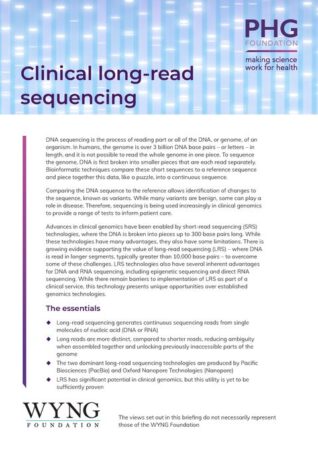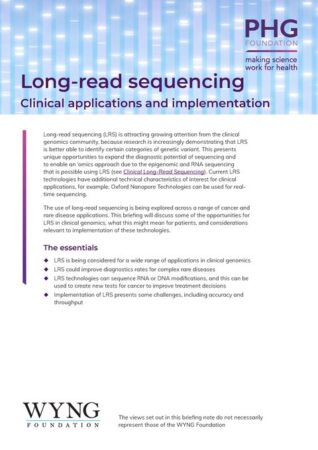Home Publications Policy briefings Developments in long-read sequencing
Developments in long-read sequencing
Advances in clinical genomics have been enabled by short-read sequencing (SRS) technologies, where the DNA is broken into pieces up to 300 base pairs long. While these technologies have many advantages, they also have some limitations. There is growing evidence supporting the value of long-read sequencing (LRS) – where DNA is read in longer segments, typically greater than 10,000 base pairs – to overcome some of these challenges.
What is DNA sequencing?
DNA sequencing is the process of reading part or all of the DNA, or genome, of an organism. In humans, the genome is over 3 billion DNA base pairs – or letters – in length, and it is not possible to read the whole genome in one piece. To sequence the genome, DNA is first broken into smaller pieces that are each read separately. Bioinformatic techniques compare these short sequences to a reference sequence and piece together this data, like a puzzle, into a continuous sequence.
Comparing the DNA sequence to the reference allows identification of changes to the sequence, known as variants. While many variants are benign, some can play a role in disease. Therefore, sequencing is being used increasingly in clinical genomics to provide a range of tests to inform patient care.
These briefings provide a succinct explanation of what long-read sequencing is and the benefits and challenges of using long-read sequencing in the clinic.
Heather Turner, Policy Analyst at the PHG Foundation, explains for you long-read sequencing, its potential applications and how this new technology measures up against traditional short-read sequencing.


